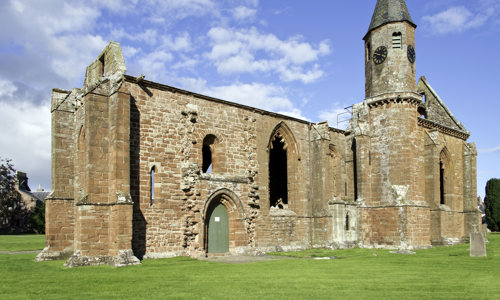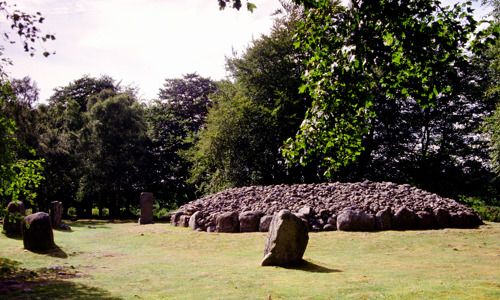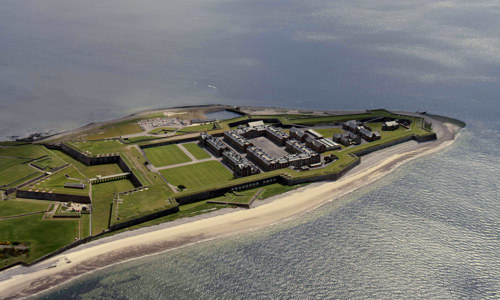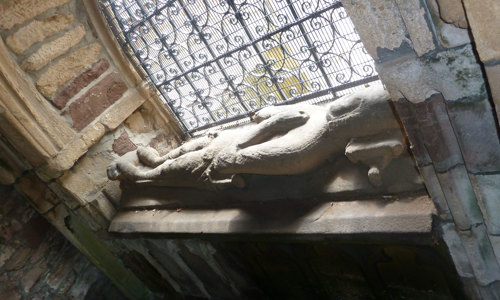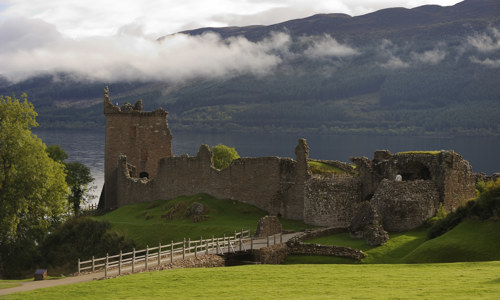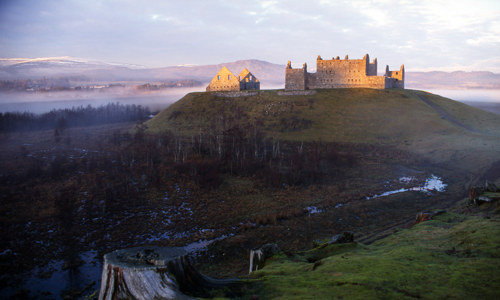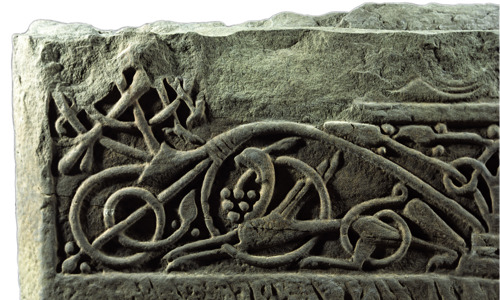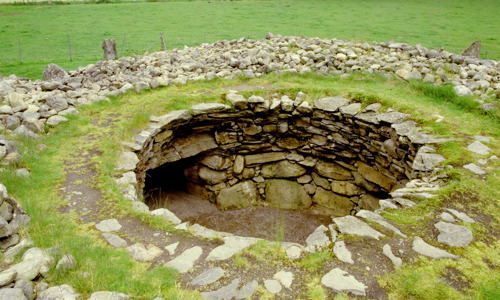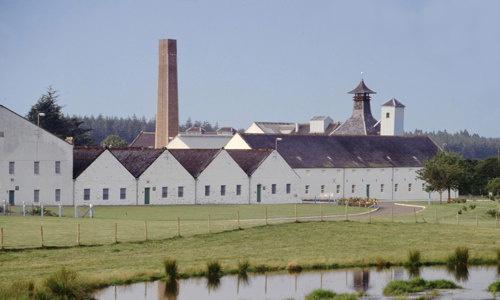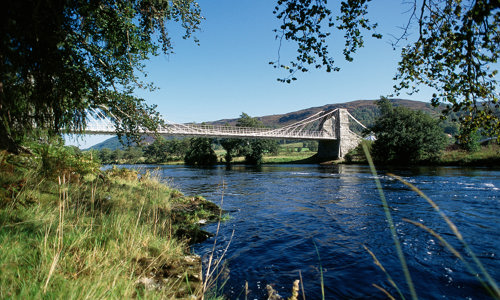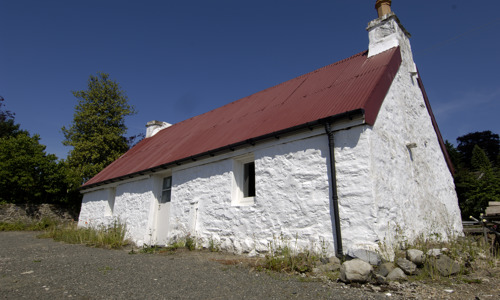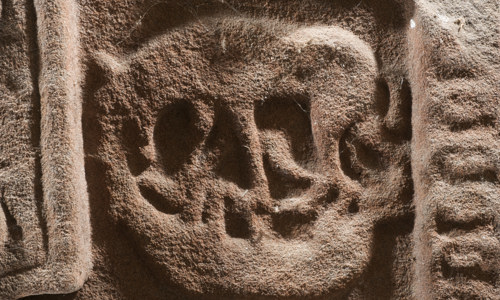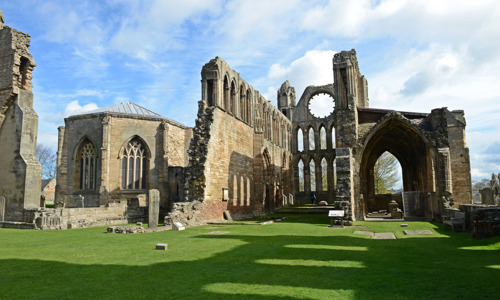History
An early symbol stone
The Knocknagael Boar Stone is not easily dated, but it probably belongs to the period between AD 400 and AD 600. It depicts:
- a wild boar, with scrolls emphasising shoulders and haunches, and spiky bristles on its back
- a series of Pictish symbols, including a mirror case, a disc and a rectangle
The stone’s decoration was carefully executed by a skilled carver – the scrolls on the boar realistically reflect musculature. This is one of only four known depictions of boars in Pictish stone carvings.
Before it was moved to the Highland Council offices for preservation, the stone stood at Knocknagael Farm just south of Inverness. However, it’s unlikely this was the stone’s original location, which remains unknown.
Legacy of the Picts
We don’t know a lot about the Picts, the descendants of Iron-Age tribes who occupied the area north of the Forth and Clyde estuaries in the first millennium AD. They left about 300 carved stones scattered across the country. The earliest of these stones, including the Knocknagael Boar Stone, date to about AD 600 and display a variety of enigmatic symbols.
The later group of Pictish stones, after about AD 700, were more overtly Christian cross-slabs. On these, the Christian cross dominates the traditional symbols.


